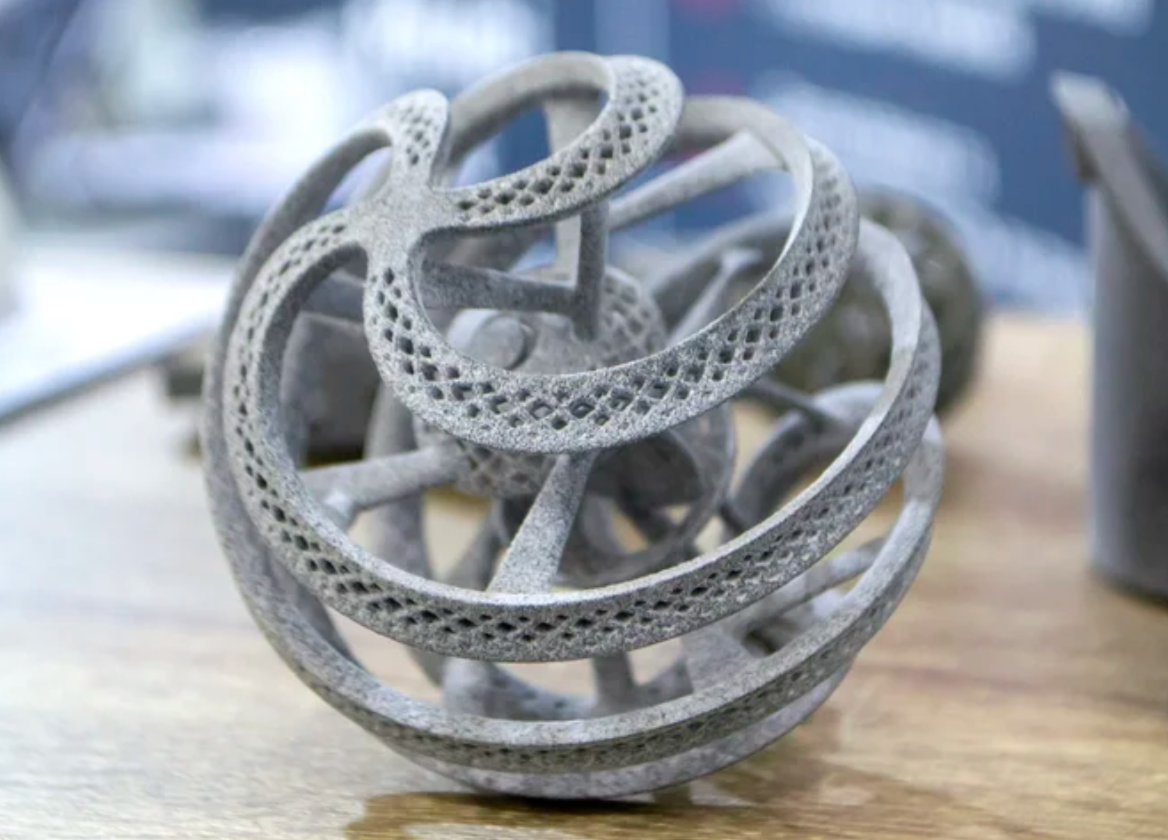Selective Laser Sintering
Selective Laser Sintering (SLS) commonly uses materials in powdered form, primarily nylon. Before beginning an SLS print, the printing chamber is preheated to a temperature just below the melting point of the material being used. This ensures that the particles are fused together by the laser during the print process and helps to prevent distortion of the final part. During printing, the laser selectively heats the powder, causing it to fuse together to form the part. After printing is complete, the printing chamber cools down to prevent warping of the products, the part is removed from the powder bed, typically with compressed air or a brush, and excess powder is shaken or blown off. The parts are then handled in post-processing.

The SLS Printing Process: Step by Step
Advantages of SLS Printing
SLS printing offers several advantages over other 3D printing technologies, including:
Greater Design Freedom
Because SLS printing uses powdered materials, it allows for greater design freedom, making it possible to create complex geometries and features that would be difficult or impossible to produce with other methods.
Cost-Effective Production
SLS printing is a cost-effective way to produce low to medium volume production parts.
Reduced Waste
Unlike other methods that require support structures, SLS printing uses the un-sintered powder as its own support. This means there is no need for support structures, resulting in less waste material.
High Quality
SLS printing produces parts with excellent surface finish, accuracy, and detail, making it ideal for functional testing and prototyping.
SLS Material available in CapableMachining
| Material | Color | Temperature resistance | Paintable | Specifications |
|---|---|---|---|---|
| PA12 Black | Ash Black | 100℃ | N | Stable color Accurae size High reusability |
| PA12 White | Bright White | 100℃ | N | Stable color Accurae size High reusability |
| PA12 30% GF | Grayish Yellow | 100℃ | N | High strength Heat deformation resistance High reusability 30% glass |
| PA12 40% Alu | Metallic Grey | 100℃ | N | High strength Wear resistance Metal color High reusability 40% aluminum powder |

High-Performance SLS 3D Printing Services
CapableMachining offers cutting-edge Selective Laser Sintering (SLS) 3D printing technology to take your manufacturing capabilities to the next level. Using state-of-the-art equipment and top-quality materials, we can produce high-performance, functional parts with unmatched accuracy and detail.
Precision & Accuracy
Our SLS technology allows us to create parts with exceptional accuracy and detail, achieving tolerances of fractions of a millimeter.
Functional Prototyping
We use SLS printing for rapid prototyping of functional parts, allowing designers and engineers to test their designs before committing to expensive tooling.
Production Parts
Our SLS process can produce low to medium volume production parts that meet the strictest standards of accuracy and precision, making them ideal for use in industries such as aerospace and automotive.